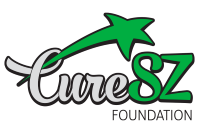
乔纳森·迈耶, MD 加州大学圣地亚哥分校精神病学临床教授加州州立医院精神药理学顾问,CURESZ 董事会成员
消除使用氯氮平的障碍
Clozapine is the only effective medication for treatment resistant schizophrenia, with response rates ≥ 40% compared to < 5% for other antipsychotics.1 Despite this, clozapine is significantly underutilized with up to 8-fold variation in rates of clozapine use between states in the United States.2 The main barriers to clozapine use in the United States rest on two issues: the burdens of monitoring and prescriber fear.3
These two issues are intertwined and relate to the association between clozapine use and serious decreases in infection fighting cells (i.e. neutrophils) in 1% of patients. Clozapine’s U.S. approval (1989) came with mandatory monitoring to track neutrophil (white blood cell) counts: weekly for 6 months, every 2 weeks for the next 6 months, and monthly thereafter. While this monitoring has nearly eliminated infection-related fatalities from clozapine-induced neutropenia (a low white blood cell count), the fear which this and other unusual adverse effects created dissuades many clinicians from using clozapine or from learning how to use clozapine. Although data indicate that clozapine use lowers mortality,4 many clinicians overestimate the risks of treatment and, sadly, subject patients to multiple trials of other agents with little chance of therapeutic benefit. Mandatory monitoring has vastly improved safety, yet it poses a number of difficulties for patients: travel costs, time, possible need for assistance to travel, discomfort from the blood draw, concerns among some about uses of their specimen, and the impact of delays in receiving the next prescription. Clozapine dispensing is tightly tied to pharmacy notification of blood results, and the quantity dispensed matches the interval to the next blood draw. For those on weekly testing, a delay of 24 hours in going to the lab or transmitting lab results places the patient in jeopardy of running out of clozapine.
Yet, there is hope. In the state hospital system I consult with, a regular lecture series on clozapine increased prescribing more than two-fold. Moreover, healthcare systems in New York and the Netherlands showed that supporting prescribers facilitates greater clozapine use. Knowledge is indeed power, and clinicians in the United States have two new resources to facilitate clozapine prescribing. One is a handbook that I co-authored inspired by the lack of clinically oriented published resources on clozapine;1 另一个是基于网络的教育网站,(重要的是)还为注册用户提供临床咨询(https://smiadviser.org).该倡议是免费的,由美国精神病学协会和药物滥用与心理健康服务管理局赞助。
对于患者而言,新批准的即时护理 (POC) 设备可能会减轻监测负担,该设备使用指尖上的一小滴血。这些设备中的第一个(http://athelas.com) not only provides results within minutes, the results are automatically transmitted to the monitoring system, and the device is now FDA approved for home use. The discomfort is less, there is no risk of delay between obtaining the results and medication dispensing, and the patient sees exactly how their blood specimen is used. The lack of delay means that a patient can have the test done anytime, and in almost any setting with trained personnel.
氯氮平的复兴已经开始。
参考:
1. 迈耶 JM,斯塔尔 SM。氯氮平手册。纽约,纽约:剑桥大学出版社; 2019.
2. Stroup TS、Gerhard T、Crystal S、Huang C、Olfson M。美国氯氮平使用的地理和临床差异。精神病医生服务 2014;65:186-92。
3. Cohen D. 开处方者担心氯氮平的主要副作用。 Acta Psychiatr Scand 2014;130:154-5。
4. Vermeulen JM、van Rooijen G、van de Kerkhof MPJ、Sutterland AL、Correll CU、de Haan L. 氯氮平和精神分裂症患者的长期死亡风险:对持续 1.1-12.5 年研究的系统回顾和荟萃分析.精神分裂症公报 2019;45:315-29。

